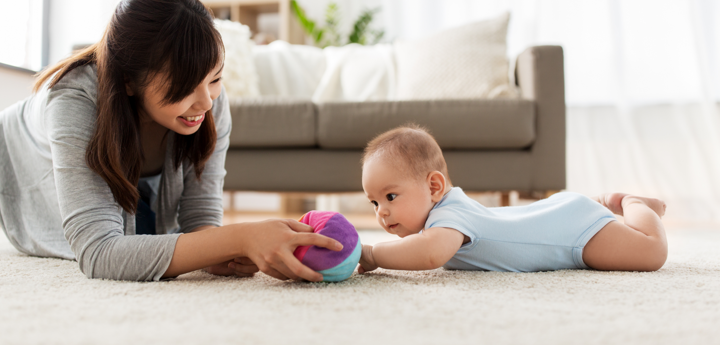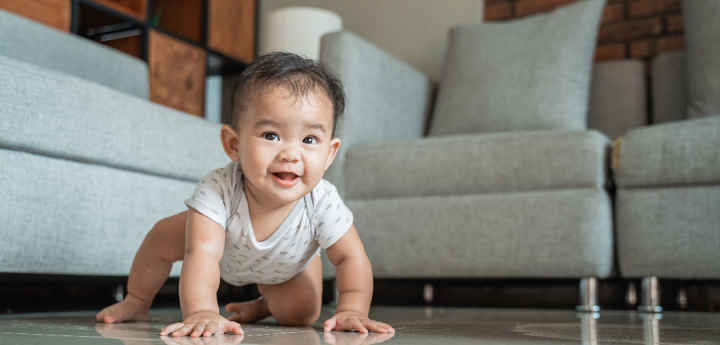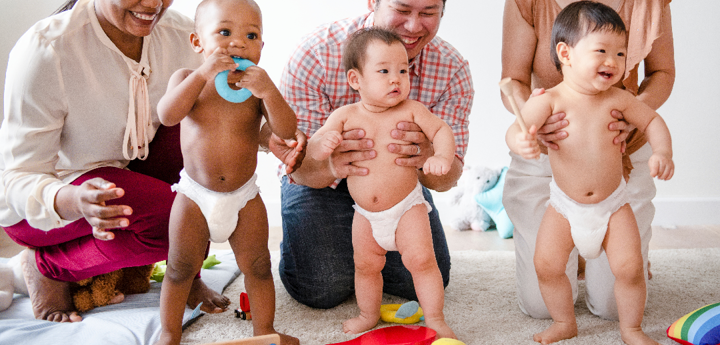Learning to walk
- 0-1 Years
- 1-5 Years
- Child development and growing up
- Moving and being active

Learning to walk is a big milestone for babies and parents. Walking gives your baby the ability to explore their surroundings in a new way. When your baby is learning to walk, use a firm surface such as the floor or carpet. Do not try to teach them them on a bed or cushion.
Remember each baby is unique and will develop at their own speed.
Signs your baby is ready to walk
Your baby may show you that they are ready to walk. The most common signs your baby may walk soon are:
Baby shoes
When your baby is learning to walk, avoid putting shoes on their feet. When barefoot your baby will be able feel their feet on the floor and experience different textures through their feet. Being barefoot can also help them stabilise and balance.
You may want to buy your baby shoes to protect their feet and to keep them warm outside. You should buy soft sole shoes for babies. We do not recommend buying trainers or fashion shoes for babies.
If you have bought soft sole shoes for your baby, regularly check that there is enough room for their toes to move.
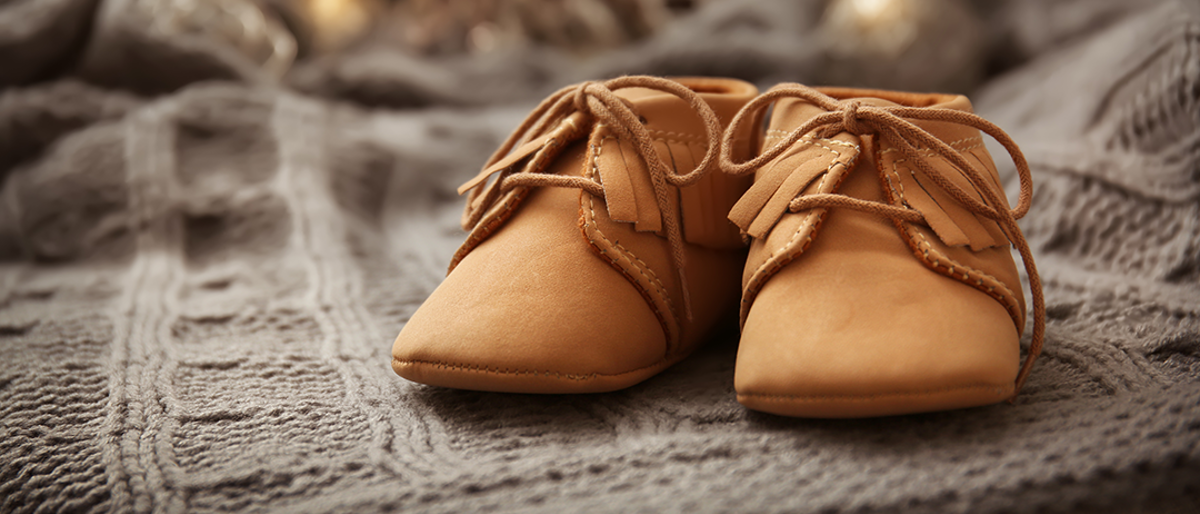
Cruising
Cruising is when a baby is using furniture, walls and people as support to move around. As your baby becomes more mobile, make sure your furniture is secure and you have babyproofed your home. Read more about babyproofing your home.
A good place for your baby to learn to cruise is by the sofa. Encourage your baby to stand on the floor with their favourite toy on the sofa, then start moving the toy to the left or right. This will encourage them to move along the sofa.
Babies will often start cruising around sideways with one or both hands on the furniture. You can use toys to get their attention and to get them to take some steps. Once your baby is feeling more confident, they will be able to cruise around with one hand on the furniture or move to be forward-facing.
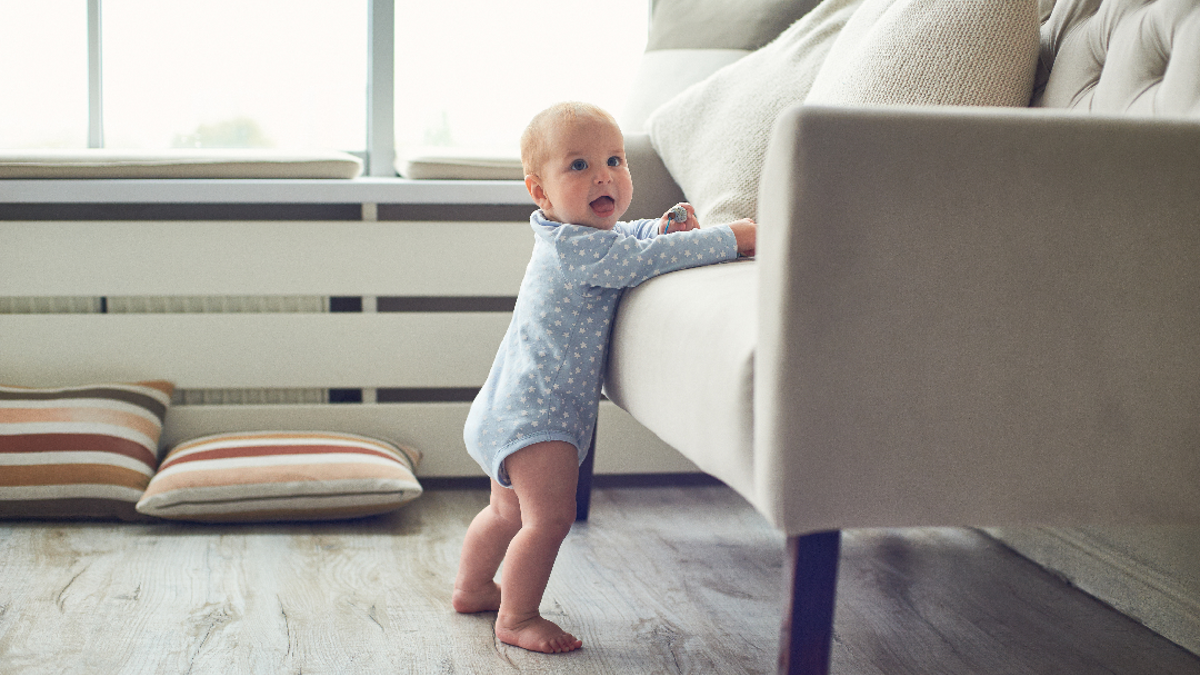
You can progress your baby’s walking by encouraging them to cruise between stable objects or furniture that are close to each other.
To improve your baby’s confidence and balance, pass them toys from behind so your baby can get used to holding onto the furniture with one hand or letting go entirely.
Using phrases like “where is your toy?” or “bring your toy” can help encourage your baby to cruise around the furniture. You can also encourage your baby to let go of the furniture and clap their hands by singing “if you’re happy and you know it clap your hands”.
Bridging the gap
To help your baby to move between furniture, encourage them to the edge of the sofa. You can then direct their attention by placing toys on nearby furniture. Your baby will want to reach towards the toy and will grab onto the nearby furniture to support themselves.
After a while your baby will be moving confidently between furniture. Slowly move the furniture further apart to increase the distance they need to walk.
This will help your baby become more confident and take some steps away from the furniture.
If your baby is struggling with their balance and stability, you may find it easier for your baby to start walking barefoot when practicing at home. It can help them with their balance and stability.
Walking with push and pull toys
Push and pull toys do not teach babies to walk. They are not an essential part of development but they can be a fun toy for your baby to play with. Your baby needs to be developmentally ready to use a push and pull walking toy. If your baby is not ready, they may become frustrated and upset.
We do not recommend using push and pull walking toys for long periods of time. Your baby should use a push and pull toy for a maximum of 20 minutes at a time.
Supervise your baby when they are using push and pull walking toys. Make sure there are no obstacles, steps or doors in your baby’s path.
Push and pull toys can help your baby by:
-
- learning to control muscles in their arms and legs
- helping them practice their balance and coordination skills
- helping them understand where they are in a space, also known as spacial awareness
- encouraging their imagination by playing pretend like pretending the toy is a lawnmower or vacuum cleaner
Signs your baby is ready to use a push and pull walking toy:
-
- cruising
- starting to let go from furniture or people
- good balance when standing
Using push and pull walking toys
When starting with a push trolley or pram your baby may need help guiding the trolley. Be careful on wooden or smooth floors as the trolley or pram may run away from them. They may also find it harder to push the trolley or pram on carpet.
You can also encourage your baby to collect toys or items for you and place them in their trolley or pram. This will help them improve their balance.
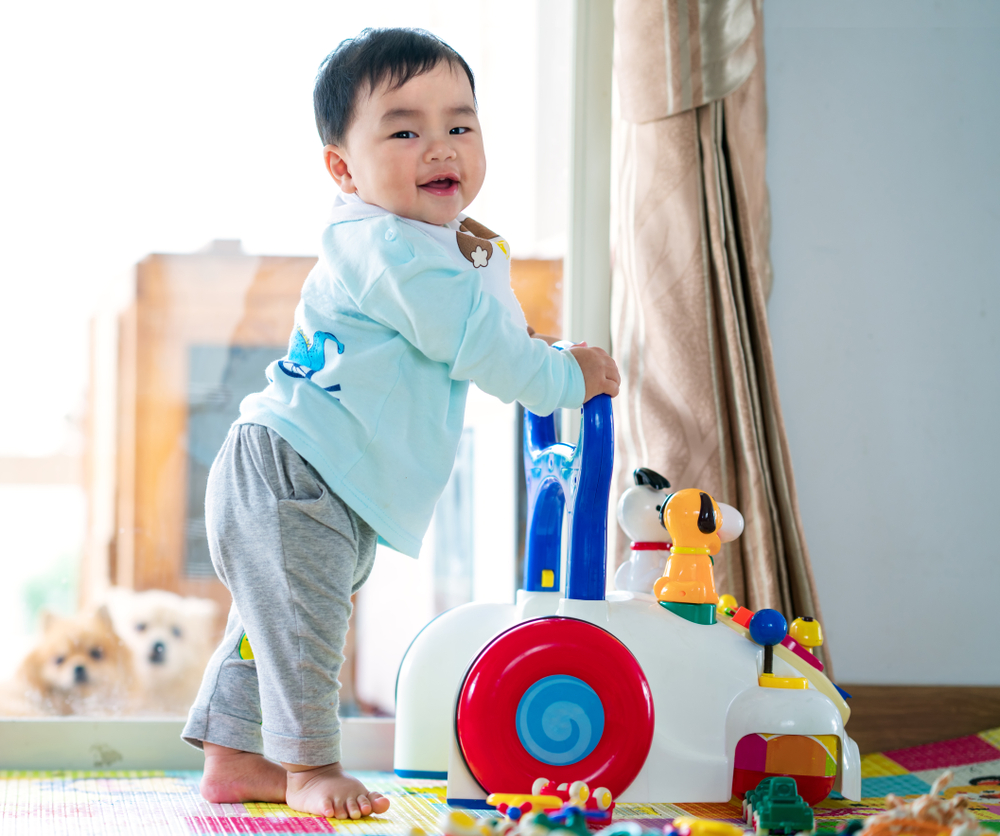
Helping your baby to walk (supported walking)
Walking with the support of an adult can help improve your baby’s confidence in walking.
You can support your baby by holding their hands as they walk. Try holding their hands lower down rather than over their head. The best height to hold their hands is between your baby's waist and nipple.
Make sure your baby is not pulling on your hands or hanging from your arms. This means that they are not putting their weight on their feet.
As your baby becomes more confident and stable on their feet. Try giving them less support so they can work to keep their balance. You can do this in stages by:
-
- loosening your grip
- offering only one hand for support rather than two
- offering a finger for support instead of one hand
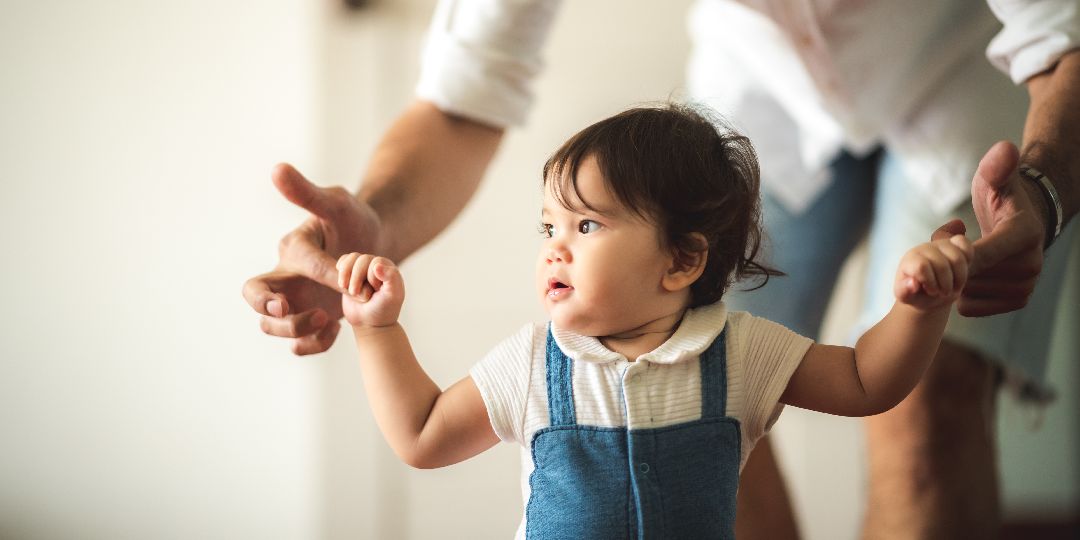
Independent walking
Make sure your baby has their balance first by encouraging them to walk between two adults. Give them lots of praise and smiles when they take steps independently.
Your baby may walk with their hands in the air and their feet wide apart. This helps them to balance and stabilise themselves. You can pass them a toy or a ball to hold while they are walking. This will encourage them to bring their hands down and test their balance.
Walking on uneven surfaces or objects can help improve your baby’s balance and spatial awareness.
Climbing stairs, under adult supervision, can help your baby improve their strength and coordination.
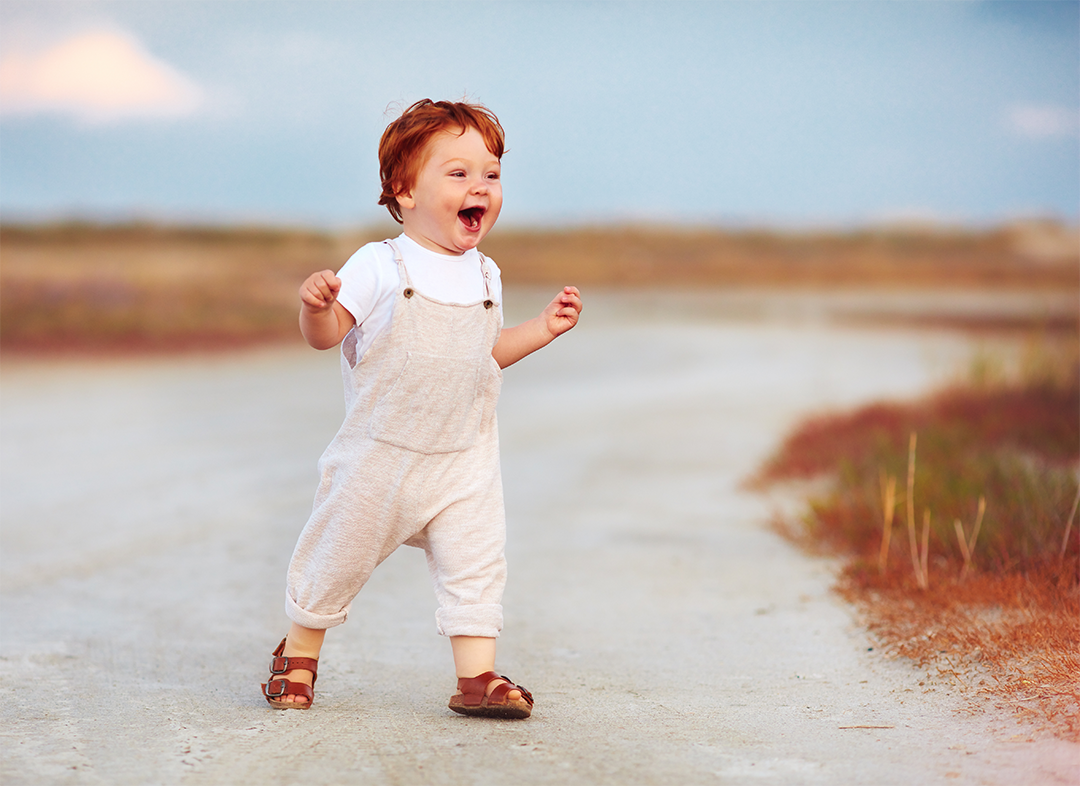
Last reviewed: 1 November, 2024

